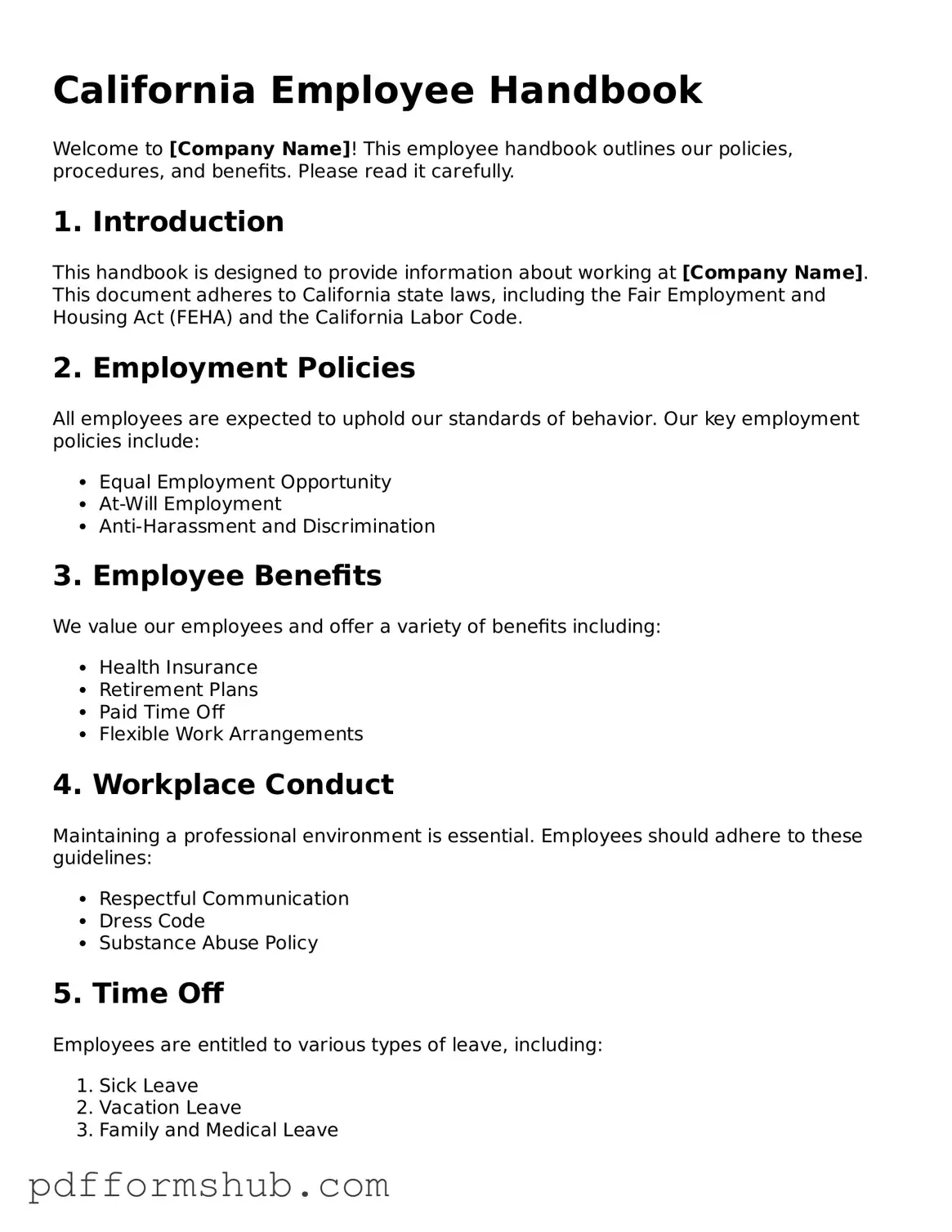Attorney-Verified Employee Handbook Form for California State
The California Employee Handbook form serves as a crucial document that outlines the rights, responsibilities, and policies of both employers and employees within the state. This handbook not only helps in establishing clear expectations but also fosters a positive workplace environment. For those looking to create or update their employee handbook, consider filling out the form by clicking the button below.
Customize Form
